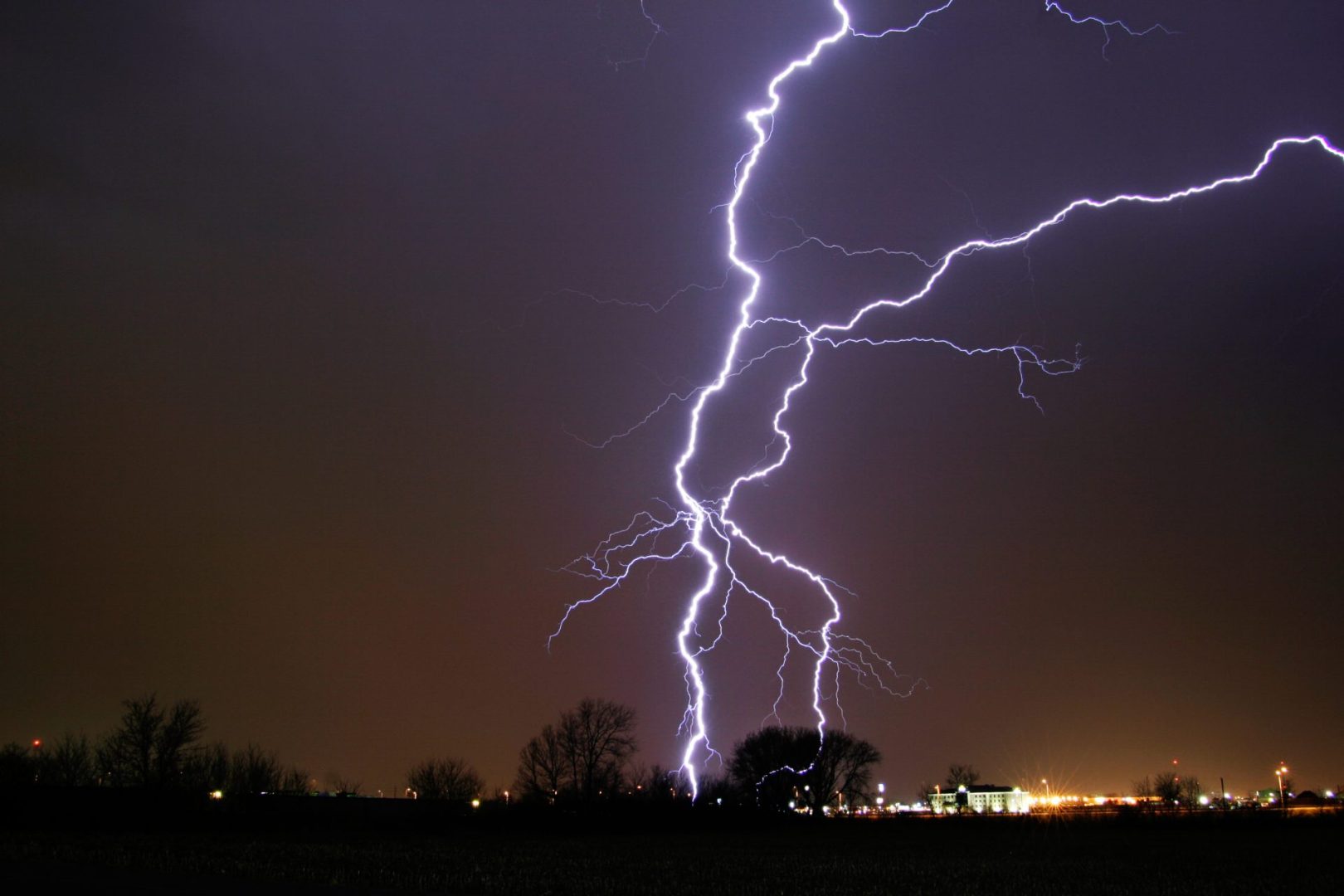A devastating lightning strike claimed the life of a 29-year-old Colorado man who was celebrating his honeymoon at one of Florida’s most popular beach destinations. The tragic incident occurred on June 20th at New Smyrna Beach, transforming what should have been a joyous celebration into an unimaginable tragedy that has left a new bride widowed and a community mourning.
The victim was standing in ankle-deep water along the shoreline when a sudden thunderstorm moved through the area. Despite the shallow depth of the water, the lightning bolt found its target with deadly precision, striking the young man and forever altering the lives of everyone involved. Emergency responders arrived quickly at the scene, but their efforts to revive the honeymoon traveler proved unsuccessful.
The incident serves as a stark reminder of nature’s unpredictable power and the hidden dangers that can emerge without warning, even during what appears to be a routine beach visit. For the Colorado couple, their dream honeymoon destination became the site of an incomprehensible loss that no one could have anticipated or prevented.
Emergency response efforts fall short
Paramedics and emergency medical personnel responded immediately to reports of the lightning strike, rushing to provide life-saving care to the stricken tourist. Despite their rapid response and professional expertise, the severity of the lightning strike proved too devastating to overcome. Medical officials confirmed that the victim was transported from the beach scene in an unresponsive condition.
The emergency response team’s quick action demonstrated the preparedness of local authorities to handle crisis situations along the busy coastline. New Smyrna Beach, known for its heavy tourist traffic and active water sports community, maintains well-trained emergency services specifically equipped to handle beach-related incidents and medical emergencies.
However, lightning strikes present unique medical challenges that even the most skilled emergency responders struggle to address effectively. The electrical discharge from lightning can cause immediate cardiac arrest, severe burns, neurological damage, and other life-threatening complications that require immediate intensive medical intervention.
The tragic outcome underscores the reality that some natural disasters occur with such sudden violence that even the best emergency response cannot guarantee survival. The incident has prompted renewed discussions about lightning safety protocols and early warning systems for beachgoers during thunderstorm activity.
Multiple lightning incidents plague same day
The fatal beach incident was not an isolated occurrence on that tragic June day. In a disturbing pattern of severe weather activity, two additional individuals were struck by lightning at a nearby golf course during approximately the same timeframe as the beach tragedy.
The secondary incident occurred at Venetian Bay Golf Course, where two golfers experienced indirect lightning strikes while playing their round. Unlike the beach tragedy, these victims survived their encounter with the dangerous weather phenomenon. Medical personnel evaluated both golfers at the scene, determining that neither required emergency transportation to area hospitals.
The proximity and timing of these multiple lightning incidents highlight the severity of the storm system that moved through the region that day. Weather experts note that when atmospheric conditions create the right combination of electrical charge buildup, multiple lightning strikes can occur within relatively small geographical areas over short time periods.
Local authorities used the multiple incidents as an opportunity to reinforce public safety messages about seeking appropriate shelter during thunderstorm activity. The contrast between the fatal beach strike and the survivable golf course incidents demonstrates how lightning’s impact can vary dramatically based on factors including strike location, electrical pathway, and immediate medical response availability.
New Smyrna Beach’s unexpected dangers
New Smyrna Beach has long held the distinction of being known as the shark bite capital of the world, with numerous documented encounters between sharks and humans occurring in its waters annually. Visitors to the area typically receive warnings about marine life dangers, with sharks representing the primary safety concern for swimmers, surfers, and beachgoers.
The beach’s reputation for shark activity stems from its unique geographical features and ecosystem conditions that attract large populations of various shark species. Surfers and swimmers have grown accustomed to sharing the waters with these marine predators, often taking precautions and following safety protocols designed to minimize dangerous encounters.
However, the lightning tragedy demonstrates that natural dangers extend far beyond the marine environment. Weather-related hazards, while less frequently discussed in beach safety conversations, can prove equally deadly and significantly more difficult to predict or avoid.
The incident has prompted local tourism officials and safety advocates to expand their public safety messaging beyond traditional marine hazards. Lightning safety education, thunderstorm awareness, and proper shelter-seeking behavior are now receiving increased attention in visitor information materials and beach safety protocols.
Understanding lightning strike risks
Lightning strikes represent one of nature’s most powerful and unpredictable phenomena, capable of delivering electrical charges exceeding 30,000 amperes and temperatures reaching 50,000 degrees Fahrenheit. When lightning strikes a human body, the electrical current can disrupt normal heart rhythm, cause severe burns, and damage the nervous system in ways that prove immediately fatal or result in long-term disabilities.
Water environments present particularly dangerous conditions during thunderstorm activity because water conducts electricity efficiently, extending the reach and impact of lightning strikes. Even shallow water, as demonstrated in this tragic case, provides sufficient electrical conductivity to make lightning strikes more dangerous than they would be on dry land.
The National Weather Service maintains detailed statistics on lightning-related fatalities, consistently ranking Florida among the states with the highest number of lightning deaths annually. The state’s combination of frequent thunderstorm activity, large outdoor recreation population, and extensive coastline creates conditions where lightning encounters occur more frequently than in other regions.
Safety experts emphasize that the only truly safe response to thunderstorm activity involves seeking appropriate indoor shelter and avoiding water-related activities until weather conditions improve. The unpredictable nature of lightning makes it impossible to determine safe distances or timing when thunderstorms are present in the area.
Community response and support
The tragic loss of the young honeymoon traveler has generated an outpouring of sympathy and support from the local New Smyrna Beach community. Residents, business owners, and local officials have expressed their condolences and offered assistance to the victim’s family during this incredibly difficult time.
Local authorities have praised the quick response of beach visitors and emergency personnel who attempted to provide aid immediately following the lightning strike. The community’s willingness to step forward and help during the crisis reflects the caring nature of the area’s residents and their commitment to supporting visitors who choose their beaches for special occasions and celebrations.
Tourism officials acknowledge the devastating impact this tragedy will have on the victim’s family and friends, particularly given the circumstances surrounding their honeymoon celebration. The contrast between the joy they came to experience and the heartbreak they now face represents every traveler’s worst nightmare scenario.
Community leaders have committed to reviewing current lightning safety protocols and exploring additional measures that might help prevent similar tragedies in the future. While lightning strikes cannot be prevented entirely, improved warning systems and public education efforts may help reduce the risk of future incidents.
Weather safety lessons for travelers
The honeymoon tragedy serves as a crucial reminder for all travelers about the importance of weather awareness during vacation activities. Many tourists, excited about their destinations and focused on recreational activities, may not pay sufficient attention to changing weather conditions that could pose serious safety risks.
Florida’s weather patterns create particularly challenging conditions for visitors unfamiliar with the state’s rapid thunderstorm development. Afternoon storms can develop quickly from seemingly clear skies, giving beachgoers little warning before dangerous conditions emerge.
Travel safety experts recommend that all visitors to coastal areas monitor weather forecasts regularly and understand local weather warning systems. Beach activities should be suspended immediately when thunderstorm activity approaches, regardless of how distant the storms may appear or how quickly they seem to be moving.
The tragedy also highlights the importance of travel insurance and emergency contact planning for couples traveling far from home. While no amount of preparation can prevent every possible tragedy, having appropriate insurance coverage and emergency plans can help families navigate the practical challenges that arise during crisis situations.
This devastating incident will forever change how many people view beach safety and weather-related risks. The memory of this young man’s tragic death serves as a powerful reminder that nature’s dangers can strike without warning, transforming moments of joy into unimaginable sorrow in an instant.














